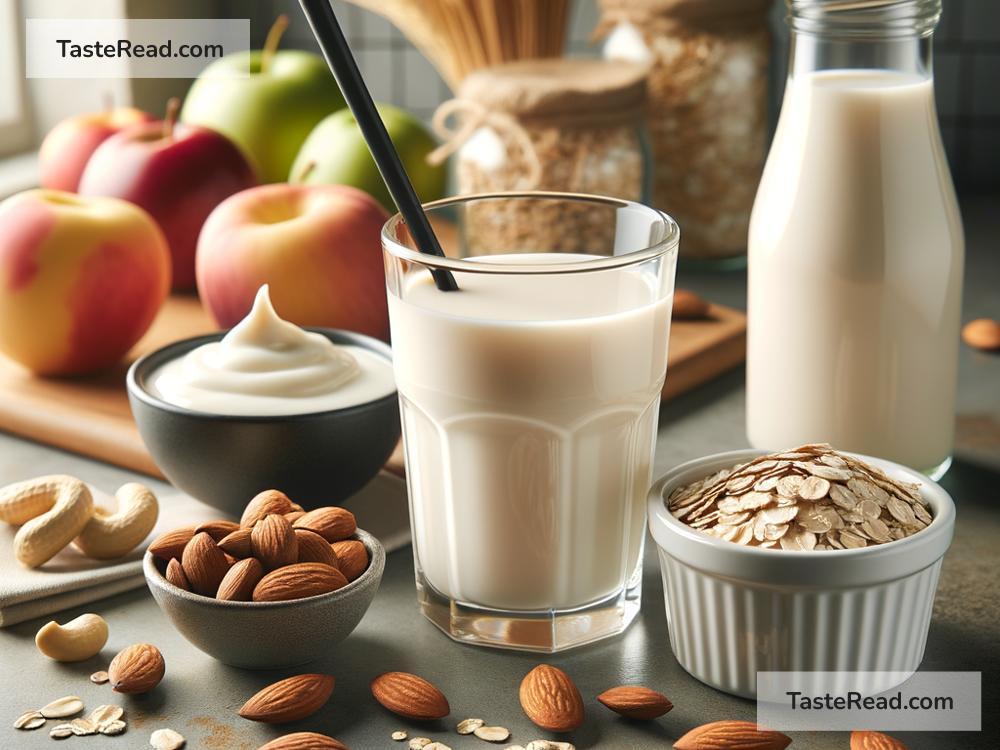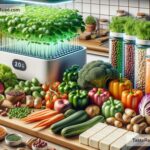The Future of Plant-Based Dairy: A Growing Trend
Dairy products like milk, cheese, and yogurt have been a big part of many people’s diets for centuries. However, times are changing, and more people are looking for alternatives to traditional dairy. One option that has been gaining popularity is plant-based dairy. Made from ingredients like almonds, oats, soy, and coconut, plant-based dairy has become a staple for those seeking healthier, eco-friendly, or animal-free choices. But what does the future hold for these products? Let’s explore.
Rising Demand for Plant-Based Dairy
One of the main reasons plant-based dairy is becoming more popular is because people are paying closer attention to their health. Some people are lactose intolerant, meaning their bodies can’t digest lactose, the sugar found in milk. Others are turning away from dairy to avoid saturated fats or cholesterol in animal-based products. Plant-based milk, for instance, often contains fewer calories and less fat than cow’s milk.
At the same time, consumers are becoming more mindful about animal welfare. Traditional dairy farming involves raising cows for milk production, which some find unethical due to concerns about animal treatment. Plant-based dairy allows people to enjoy familiar foods without worrying about harming animals.
The environment is another big driver of this trend. Dairy farming requires large amounts of water, land, and feed for cows and also produces methane, a powerful greenhouse gas. It’s no secret that climate change is a growing problem, and switching to plant-based options is seen as one way to reduce carbon footprints. For example, almond milk and oat milk use less water and create less pollution compared to cow’s milk.
Innovation and Variety in Plant-Based Dairy
Plant-based dairy is no longer limited to almond or soy milk like it used to be. Today, there is a wide range of options to suit different tastes and diets. From creamy oat milk to rich coconut yogurt and even spreads made from cashews, the industry is constantly evolving. Some companies are also developing products that mimic the taste and texture of traditional dairy more closely, using advanced food science techniques.
New ingredients are being explored, too. For instance, peas, hemp, and macadamia nuts are starting to make their way into plant-based dairy. These innovations are helping plant-based products appeal to a wider audience, including people who may not like the taste of older options like soy milk. As technology advances, the quality of plant-based dairy is only going to get better.
Challenges Ahead
Although plant-based dairy is growing, it still faces challenges. For one, traditional dairy has deep roots in many cultures. In some places, people strongly associate cheese, milk, and other dairy products with their culinary heritage, making it harder for plant-based alternatives to catch on.
Another challenge is affordability. Right now, plant-based dairy options can sometimes be more expensive than cow’s milk or cheese because of costly ingredients and production methods. For plant-based dairy to truly compete, manufacturers will need to find ways to bring costs down so it’s accessible to everyone.
Taste and texture are also hurdles. While plant-based milk is often praised for its clean taste, products like plant-based cheese and butter sometimes struggle to replicate the creamy, rich flavor of traditional dairy. Scientists and food companies are working hard to improve these aspects, but it may take more time.
The Role of Big Brands and Startups
What’s exciting about the future of plant-based dairy is that both small startups and large food companies are investing heavily in this space. Startups bring creativity and innovation, producing new flavors and experimenting with ingredients. For example, companies like Oatly and Ripple Foods have made oat milk and pea milk trendy.
On the other hand, established brands such as Nestlé and Danone are stepping into the plant-based world, creating their own lines of dairy alternatives. When big brands get involved, it usually means greater resources for research, production, and marketing, which helps make products available to more people. This combination of innovation from startups and scale from big companies is likely to drive the industry forward.
A Brighter, More Sustainable Future
The future of plant-based dairy looks promising. As more people embrace these products for health, environmental, and ethical reasons, the market will continue to grow. Experts predict that plant-based dairy sales will rise significantly in the next decade. By improving taste, reducing prices, and encouraging innovation, the plant-based industry is making it easier for people to make the switch.
Governments and organizations around the world are also promoting sustainable food choices, which could further accelerate the growth of plant-based dairy. Support for green policies and consumer education could push more people toward these options, creating a win-win for both the planet and consumers.
Conclusion
Plant-based dairy isn’t just a passing trend—it’s shaping up to play a big role in the future of food. With better technology, smarter farming practices, and growing demand for sustainable options, these products are here to stay. While challenges like cost and taste remain, the industry is making progress every day. Whether you’re a long-time fan or just curious, plant-based dairy gives everyone the chance to embrace a healthier and more eco-friendly way of eating.
As we look ahead, it’s clear that plant-based dairy has the potential to revolutionize how we think about food. What started as a niche market is now a growing movement toward a more sustainable and compassionate food future—and that’s something we can all look forward to.


